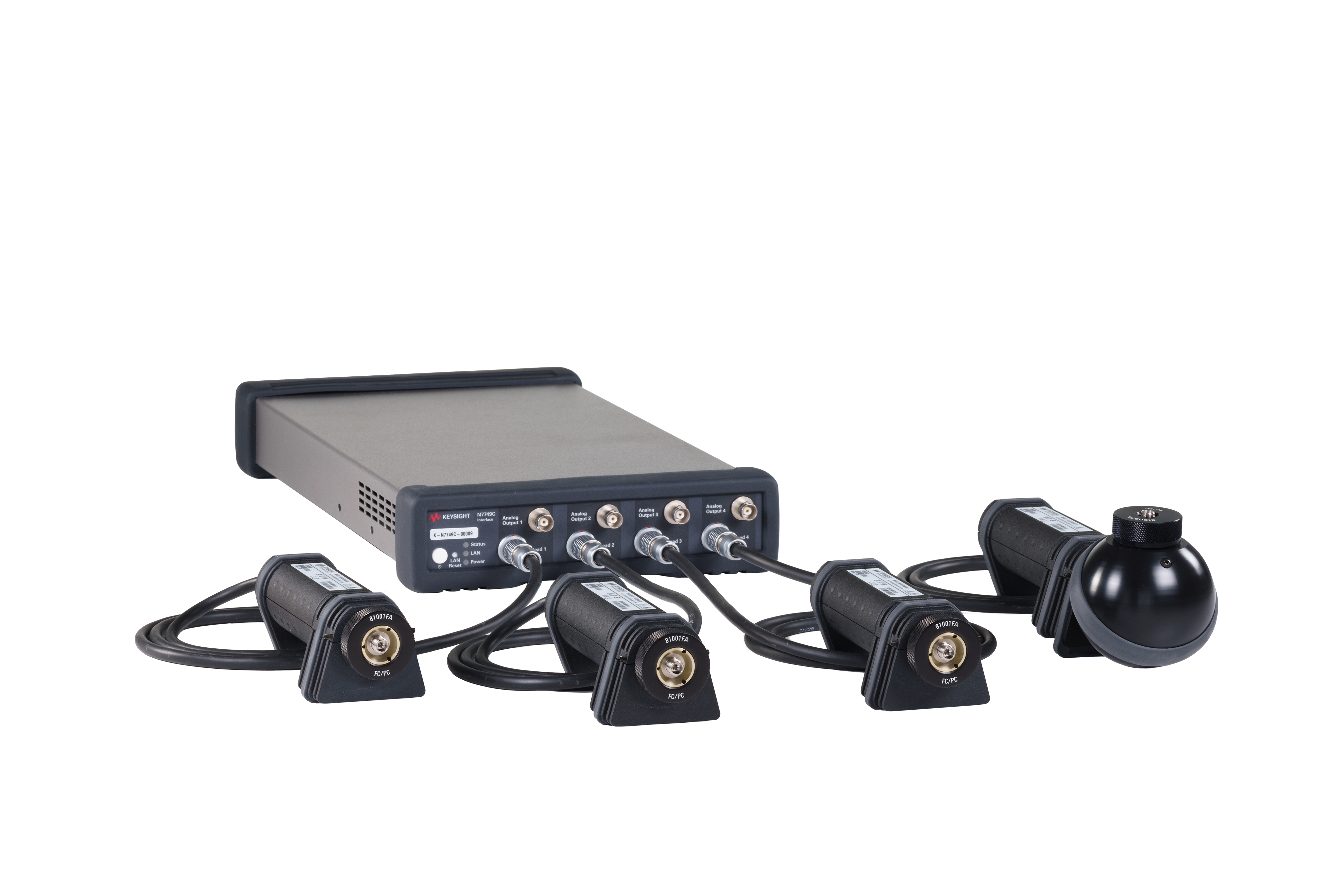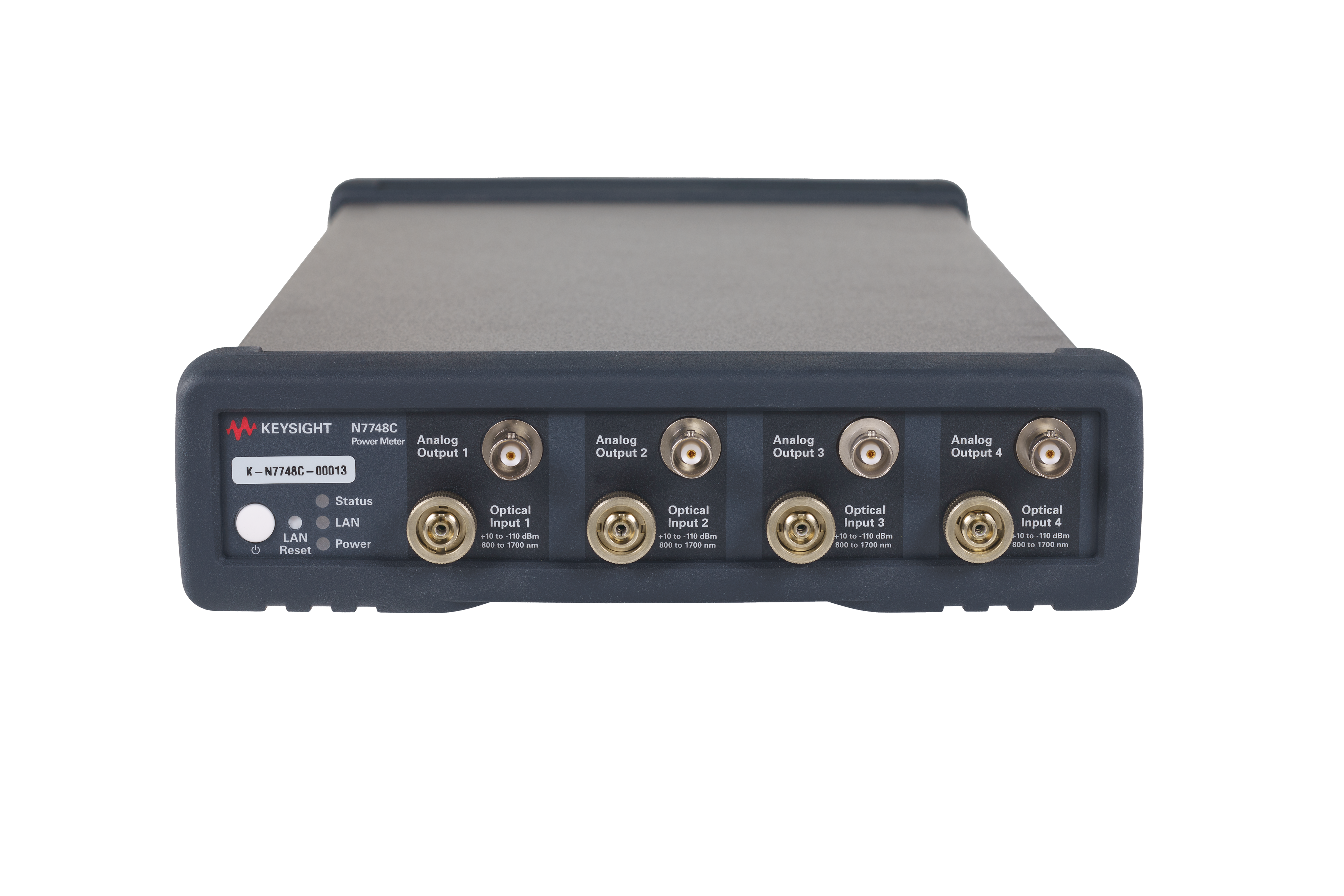What are you looking for?
Optical Power Measurement Products
Keysight optical power measurement instruments and modules provide high performance functionality. These modules include multiport power meters, optical power sensor modules, optical heads and return loss modules.

Optical power meters and measurement tools
Multiport power meters
Standalone multiport instruments of the N774xC and predecessor N774xA families provide fast sampling, deep memory and fast data transfer, especially for multichannel applications.
Power sensor modules
Power sensor modules provide a front panel optical input that accepts various 81000xI connector interfaces for popular fiber connector types or bare fibers. Besides giving optical power in units of W or dBm or dB referred to a reference, calibrated for any wavelength in the available range, these advanced instruments provide high speed data logging of up to 20 k (100 k for the 81636B) values, triggered internally or externally.
Optical heads
Optical heads provide a 5 mm diameter detector area and allow flexible placement of the power meter which is then connected to the N7749C, 81618A or 81619A interface module in the mainframe. The functionality is the same as for the sensor modules and a choice of adapters allows input from popular connector types, bare fibers or open beams.
Return loss meters
Return loss meters use two power sensors and fiber couplers to provide a direct measurement of the optical return loss. One sensor measures the optical power reflected back to the instrument while the other monitors the optical power output from the instrument. The ratio provides the return loss. These instruments can use a tunable or fixed-wavelength external laser source and can also be used with Fabry-Perot lasers for very stable measurements.
Find the series that is right for you
See Keysight's optical power meters in action
Lambda scan solutions for automating optical measurements and analysis
Snap-on connector interfaces streamline photonic testing
Benefits of d-shape connector adapters for optical power meter heads
Protect your innovation investment
Featured resources for the optical power measurement products
Frequently Asked Questions - Optical power measurements
Optical power measurement is crucial for testing optical network performance and maintenance. It helps verify signal strength, troubleshoot network issues, and maintain signal quality in applications such as data center networks, which use optical cables for high-speed data transmission and processing.
Optical power meters measure the power levels of light signals in watts or in a decibel-milliwatts (dBm) logarithmic ratio. The power level of a light signal is the total energy of all of the photons coming from a fiber optic cable. Another key optical power measurement is optical loss between two points in a fiber, which is measured using an optical time domain reflectometer.
An optical power meter is used to quantify the optical power in an optical signal. It is generally used in fiber optics and telecommunications to determine the intensity of light signals.
Optical power meters use a photodetector, which converts incoming optical signals into electrical current. This current is then translated into a power measurement displayed on the device. Some are attuned to observe transient fluctuations, while others are designed to be calibrated to measure constant optical power levels.
The key specifications to look for when picking an optical power meter are the power range, the wavelength range, and the sensor accuracy or uncertainty. A good optical power meter should have a high dynamic power range, which is important for troubleshooting optical cable issues.
The optimal wavelength range of an optical power meter depends on the application. For example, the ideal wavelength range will be higher for high-speed data center applications than local area networks.
Sensor accuracy uncertainty should be calibrated in the 2.5-4.5% range. Higher uncertainty could lead to inaccurate results.
Want help or have questions?













